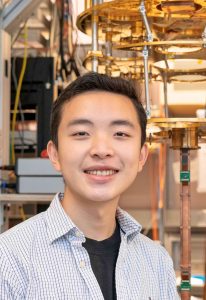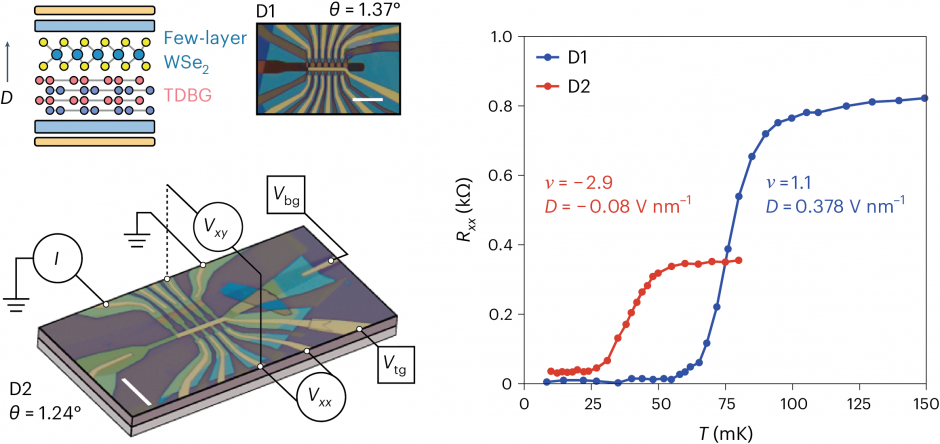
Almost a year and a half ago, Ray Su, pictured above, began a Co-op term with UBC physics professor Josh Folk.
Ray Su: “Initially, my role involved learning the methods of nanoscale and cryogenic sample preparation from members of the group – from using the “scotch-tape” method to isolate two-dimensional crystals, assembling crystal layers to form heterostructures, utilizing UBC’s cleanroom facility to shape and create electrical contacts, and finally packaging the samples for cryogenic measurement. We chose to investigate “twisted double bilayer graphene” (TDBG), a heterostructure where one bilayer of graphene is rotationally misaligned (“twisted”) against a second bilayer by roughly 1.3 degrees. Following numerous attempts to fabricate such samples, I led measurements of the most promising samples in a dilution refrigerator at 0.01 K or -273.14 C with the help of Prof. Folk. We examined the electronic properties of the samples in response to variables such as the number of carriers per unit cell, temperature, and magnetic field. The most rewarding aspect of the project was learning to apply physics intuition from effective models to understand our experimental results despite the many microscopic details involved.
The project was motivated by the curious absence of clear superconducting signatures in TDBG at the time and, more broadly, in graphene heterostructures involving a bilayer of graphene twisted with adjacent graphene sheets. In contrast, superconductivity appeared to be abundant in twisted monolayers of graphene, first reported in 2018. The main finding of our research is that superconductivity could emerge next to other correlated electronic phases of TDBG, and our key ingredient was placing the graphene sheets on a tungsten diselenide substrate. Further experiments and theories that identify the essential elements for superconductivity in TDBG could have implications for our understanding of the phenomenon in graphitic systems in general.”

Optical micrograph of the graphene samples and their vanishing resistance measured as a function of temperature.
Su, R., Kuiri, M., Watanabe, K. et al. Superconductivity in twisted double bilayer graphene stabilized by WSe₂. Nat. Mater. (2023). https://doi.org/10.1038/s41563-023-01653-7